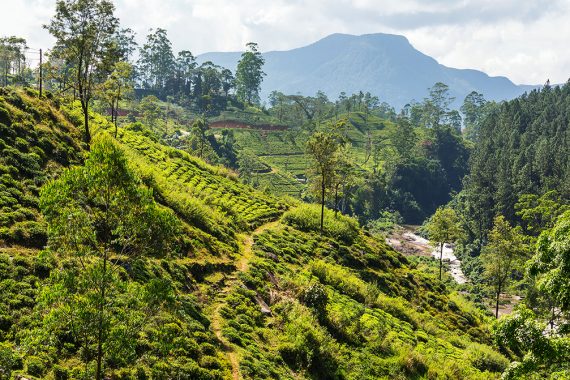Terroirs – where agricultural properties and growers’ expertise meet

Teas are found in China, Japan, Taiwan, Sri Lanka, Kenya, Rwanda, and other corners of the world such as Turkey, United States, Russia, Australia. Every plantation offers unique terroir and experience that esteems the teas prior to further processing.
Teas originate out of Camellia genus with its sinensis species used to produce tea. Found under sinensis species are 3 recognised plant varieties, namely: sinensis, assamica, and cambodiensis. Nonetheless, mainly only 2 out of those 3 varieties are actually used in tea production and these are Camellia Sinensis variety sinensis and Camellia Sinensis variety assamica. Those tea varieties have been further cultivated. Cultivars – more than 500 cultivars – are plant species created through hybridisation or mutation and selected for its specific characteristics. Cultivars are reproduced through use of snippets of the plants since characteristics are not necessarily transferable by seeding. Tea production concluded in 6 types of tea: white, green, yellow, black, dark, and oolongs.
Every tea has its own cultivar. For instance, Taitung Oolong has a cultivar of Chin-Hsin. Chin-Hsin is one of the cultivars chosen by the Japanese to grow in Taiwan during 1895 occupation of Taiwan. That was based on their research through which they addressed their need to continue the observed significant tea business in Taiwan. The work done and the selections made brought forth this cultivar. So, Taitung Oolong that has Chin-Hsin cultivar overall belongs to sinensis variety of Camellia Sinensis and grows in Taiwan. It is grown on particular soil and in particular climate. In this particular case it grows in Taitung county around the Lu Ye Township. Furthermore, Taitung Oolong is grown at an altitude of 300 – 450 meters. While high mountain Taifeng Oolong is grown 1400 meters above the sea level.
Simultaneously Taiwanese Jade Oolong – grown at 400 – 2650 meters (becoming Goa Shan above 1000 meters) – clearly exemplified how taste can notably vary with plantation’s altitude and latitude and that each mountain would have its own notes. Actually, at the time of writing of this article, its common Cuy Yu cultivar is diversified. It is switched to a cultivar known as Si Ji Chun cultivar and becomes referred as Four Seasons Oolong; however, vendors retain the name Jade Oolong out of marketing concerns.
With this important understanding and examples in mind, let’s return directly to the question of terroir in general and its impact on tea flavour. Plantations very by their soil, climate, altitude, latitude and those factors greatly influence the quality of tea. Agricultural properties of each region in combination with the expertise of the local growers contribute to the tea growing practice and its outcomes.
Plants are constantly adapting to their environment and produce substances that create interesting flavours. Some tea lovers could say that aroma constitutes flavour, however that would not be quite accurate since flavour is a summary of taste and aroma. A clear example is that the initial aroma of the wet tea leaves could not be as noticeable once the tea beverage is served. The taste that contributes to the overall sensory tea drinking experience would not be reflecting the aroma. Plants have different experiences that are embedded in climate particularities. Those are climate particularities responsible for reasonable stresses such as amounts of shade or water shortage, or temperature changes. Those experiences are reflected in the leaves. Aroma, taste, and overall flavour depend on those conditions.
Some teas are insect bitten. By far not all, that would depend on the herbivorous inhabitants of the territory and the actions taken to prevent such occurrences through use of particular sprays or organic methods. Notably some tea plants – usually deep-rooted tea trees – are native and centuries old and by their default highly resilient and do not require additional help to perform in a particular fauna.
On top of that and preceding further processing, plants very by season of harvest. Seasonality varies for every type of tea. Teas are grown and plucked in different seasons acquiring their own value, particular taste and aroma potential.
To conclude, teas are a particular type of plant cultivated by humans seasonally grown in variety of soils, climates, across whole range of latitudes, altitudes, and other conditions. Further they are plucked and processed to bring the ultimate cup of a particular offering to the table.

